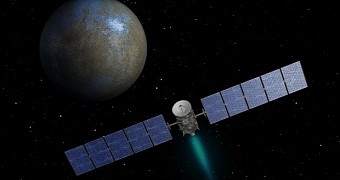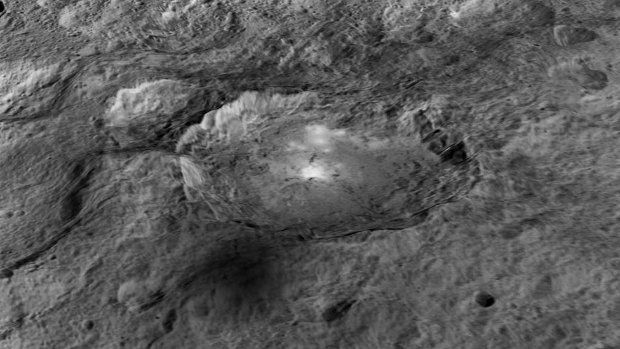As it turns out, dwarf planet Ceres is somewhat of a space hoarder. Or, as scientists like to call it, a cosmic dartboard. What this means is that, these days, much of the material on its surface doesn't really belong to Ceres but is instead debris from asteroids, meteors and other bodies that smashed into it.
Brown University researchers discovered this intriguing fact about the orb when, while carrying out a series of experiments in laboratory conditions, they found that the dwarf planet's anatomy is such that the projectiles that hit it don't bounce back into space but become part of it.
How the experiments played out
Data and images obtained by NASA's Dawn probe, launched in September 2007 and orbiting Ceres since this year's March, suggest that the dwarf planet is made up either of a very porous silicate material or maybe water ice.
As part of their investigation, the Brown University scientists created surfaces mimicking the orb's supposed makeup and then fired basalt and aluminum pebbles at them to simulate hits from stony or metallic celestial bodies.
The pebbles were fired using a cannon that can launch projectiles at 16,000 miles (nearly 26,000 kilometers) per hour. The team discovered that, following the collisions, the smashed pebbles didn't bounce back, as they expected.
Rather, whatever debris was created in the crash was deposited on the base material, be it the porous silicate or the water ice replica. If this is true for Ceres as well, the find does make the planet somewhat of a cosmic hoarder.
“The study showed that in all cases, large proportions of the impact material remained in and around the impact crater. This was especially true in the icy case,” said researcher Terik Daly in an interview.
“This is really contrary to previous estimates for small bodies. The thought was that you’d eject more material that you’d collect, but we show you can really deliver a ton of material,” added Peter Schultz.
So, what does this tell us about Ceres?
In a report in the journal Geophysical Research Letters, the scientists propose that, as shown by their findings, it might very well be that, over the ages, Ceres has collected loads of material from bodies smashing into it and disintegrating on impact. So much so that it might not be far-fetched to assume that, these days, the orb's makeup is pretty much a mish-mash of debris collected over billions of years of bombardment. In fact, this scenario would best explain the dwarf planet's appearance.

 14 DAY TRIAL //
14 DAY TRIAL // 

